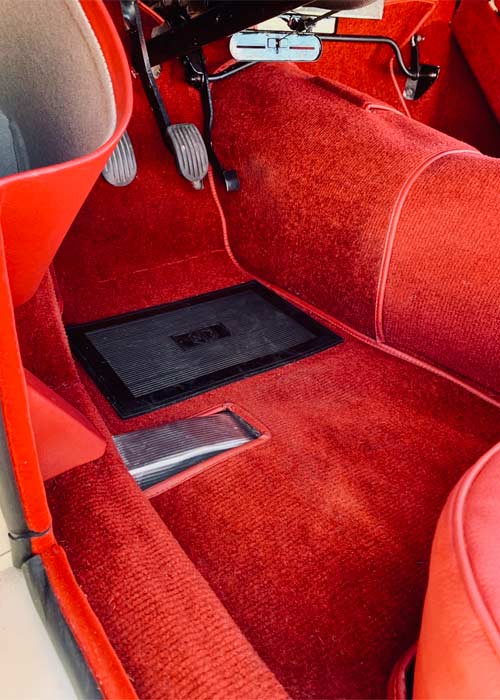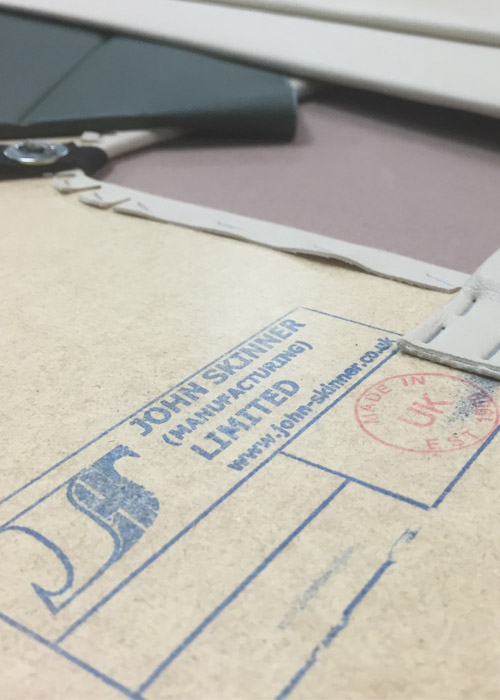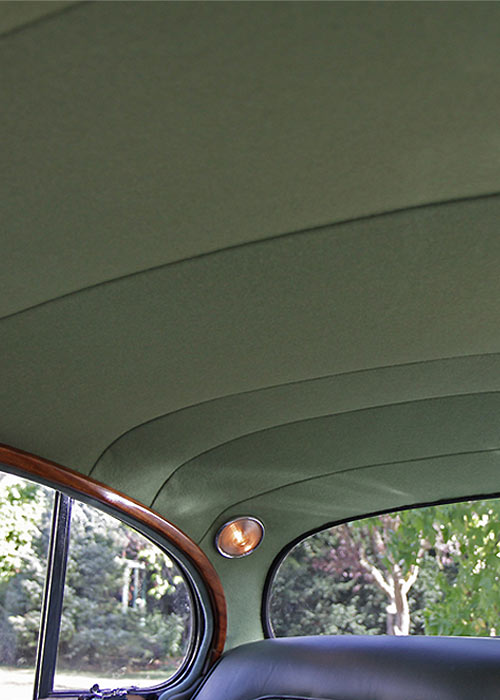Your Quote
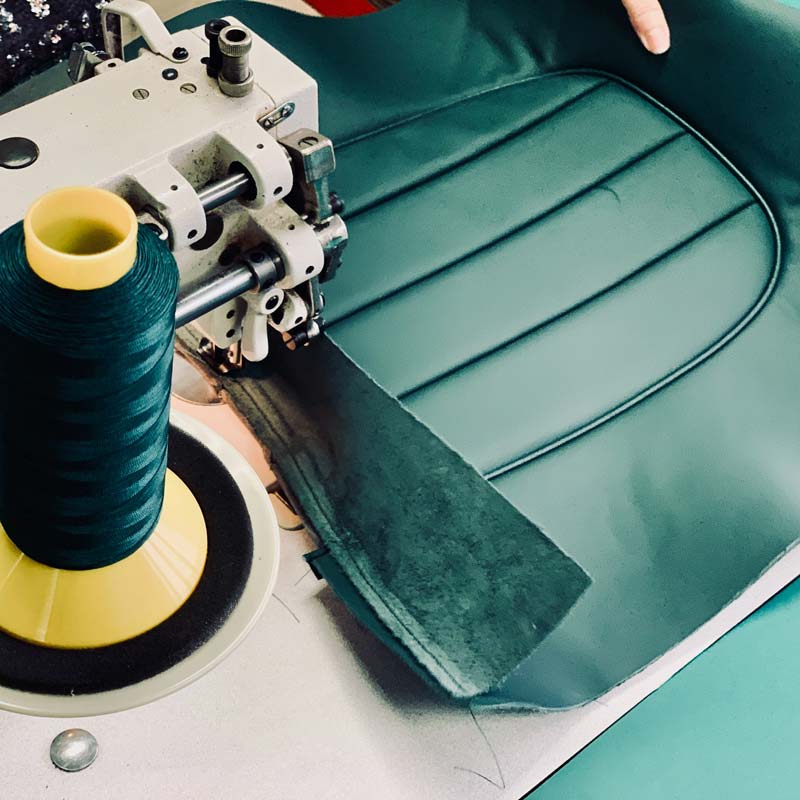
Our seat kits are the best in the industry. Made to original specification with quality materials.
The production of our seat kits takes time, knowledge and skill. We manufacture all our restoration seat kits from our Cheltenham workshop with dedication, precision and attention to detail.
From accurate pattern making to digital cutting technology, our seat kits are made to fit. Our genuine pleating methods alongside our HF (high frequency) welding processes means we deliver exceptional seat kits sympathetic to all original detailing and finishes.
Read more about the key details that help us craft exceptional seats and upholstery below.
Original Specification Patterns
All our seat patterns have been reverse-engineered from original specification trim. This gives us the confidence to know that we supply seat kits that fit to original seat frames and foams without any risk of working from patterns that have been altered unknowingly over the years by various trimming interpretations and after-market replica. To this day, we still house a large archive of original seats in our workshop which we regularly refer to for pattern information and seat production.
Originally starting out in pattern making and cutting in the North East of England, John Skinner acquired the knowledge to make accurate patterns from original seats by carefully taking them apart, tracing off each piece and recording production notes and assembly instructions.
For many years, our sewing machinists dedicated much of their time in the workshop to marking and cutting out these patterns by hand, but having now transferred all our patterns into a digital library we can cut them with speed and millimetre precision using our on-site CNC machines.
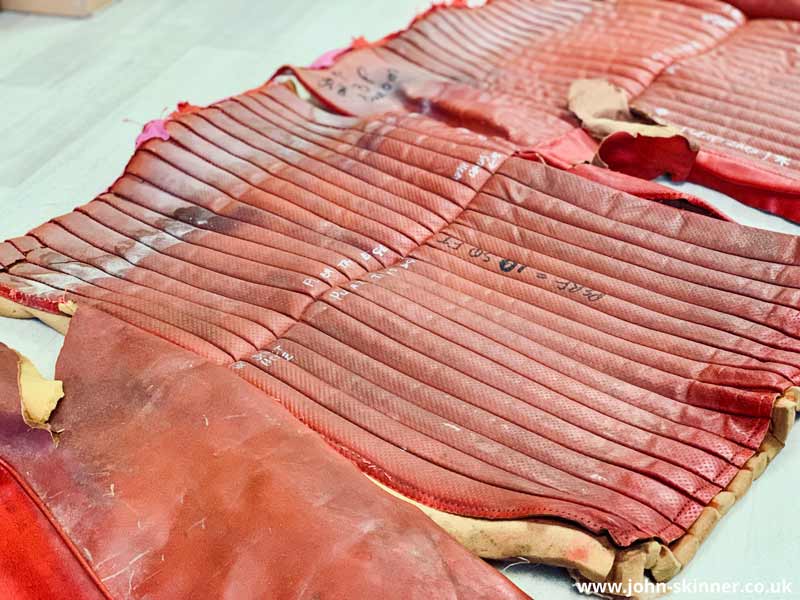
Original Seat Welding & Leather Embossing
We use our on-site High Frequency Welder to add original specification weld patterns to vinyl cushions, backrests and panel work. (Welding is the process of fusing together vinyl and foam under high heat and pressure to press weld lines and patterns into the surface of the vinyl – you can read more about our weld tooling here).
Welding was seen most commonly across Austin Healey (specifically 3000, Mark 3 BJ8 Front Seats, Rear Seats & Quarter Panels) and Triumph TR4 – TR6 Seat and Panel Kits.
Austin Healey BJ8 models featured a small, offset square weld pattern across their seats, whilst Triumph TRs had an offset diamond pattern running in lines either front to back (as seen on the Triumph TR5 & TR250 models) or horizontally across (as seen on the TR6 models).
We are one of the only companies in the world to have the original weld template designs for these cars and offer the welded finish as standard in our kits.
For our customers wishing to upgrade from vinyl to leather seats, we offer a ‘Perforated Embossed’ finish to the surface of our leather. Whilst this is non-original for leather seat work across Austin Healey & Triumph TR models – any leather seats leaving original factory production lines would have been plain – we offer this as an option for our customers wanting to upgrade to leather whilst keeping a feel of the original vinyl styling.
The ‘Perforated Embossed’ finish that we offer for leather seats is original for Jaguar models – having most commonly been seen across the later E-Types and the majority of the Jaguar Saloons.
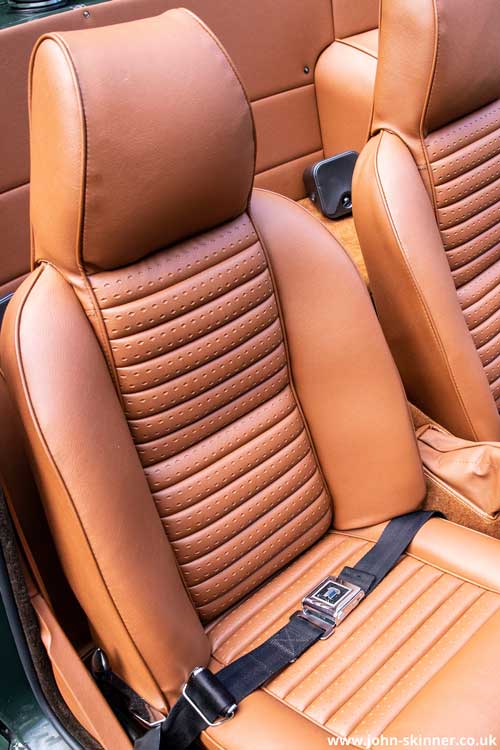

Consistent Colour Matching
Where our seat kits use a combination of vinyl and leather – often in the case of LeatherFaced seat specifications – we have carefully colour matched our materials to allow for a uniform appearance when viewed side by side. This means that a pleated leather seat panel sewn into a vinyl seat surround will show complete and seamless consistency of colour between the two materials – and let’s not forget our leathercloth pipings have been colour matched to co-ordinate too!
We check any materials arriving at our workshop against our standardised colour library to ensure they sit within our accepted colour tolerances and we work closely with our suppliers to help us maintain this consistency. It also gives us peace of mind to know that sewn items being stitched in our Sewing Department are going to match with panel items being worked on by other members of our team in our Trimming Department.
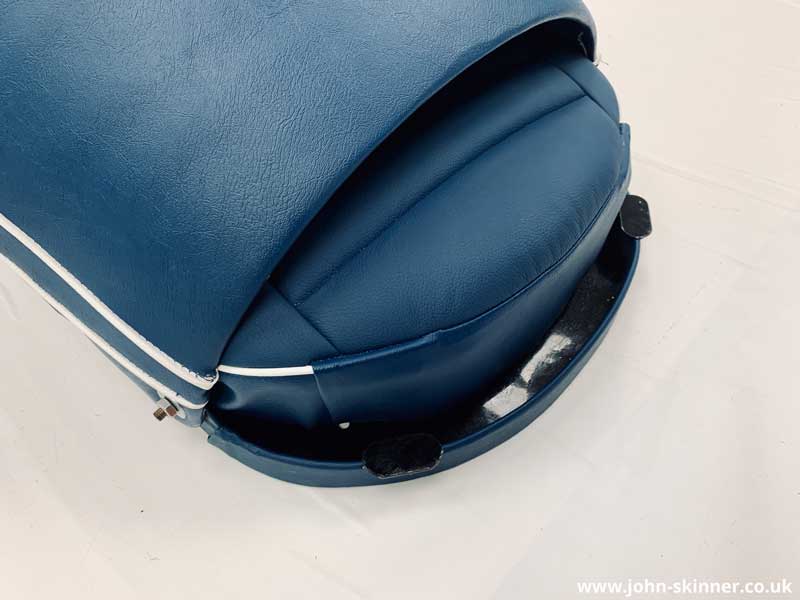
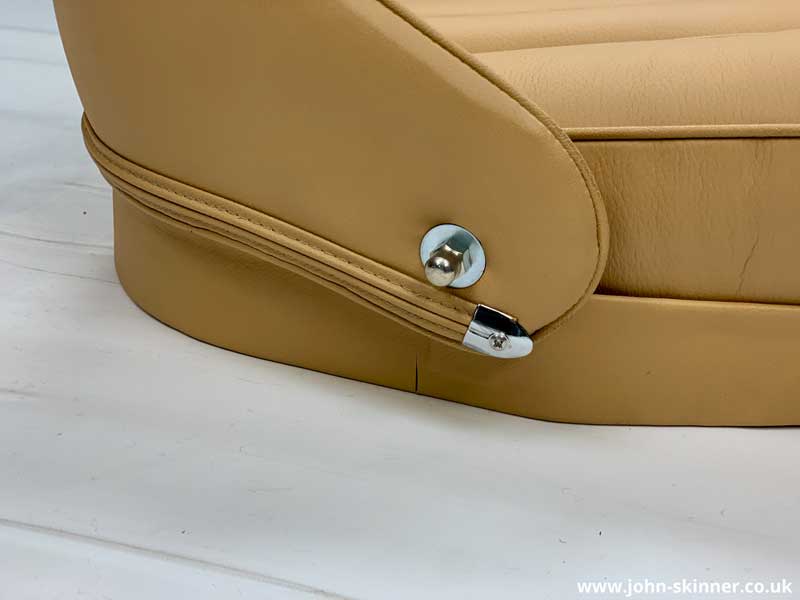
'Tuck & Roll' Pleating
We use a ‘Tuck & Roll’ pleating method to all our pleated seat panels. This uses a slit foam method to create tuck-and-roll pleats across our seat cushions and backrests. Unlike imitation pleating (made simply from stitch lines across a length of material), we stitch our pleats into precision pre-cut 17mm slit foam to give depth, definition and a quality finish to our pleated panels. Our pleating method, in combination with our engineered piping, gives our seats beautiful shaping and a long-lasting structure.
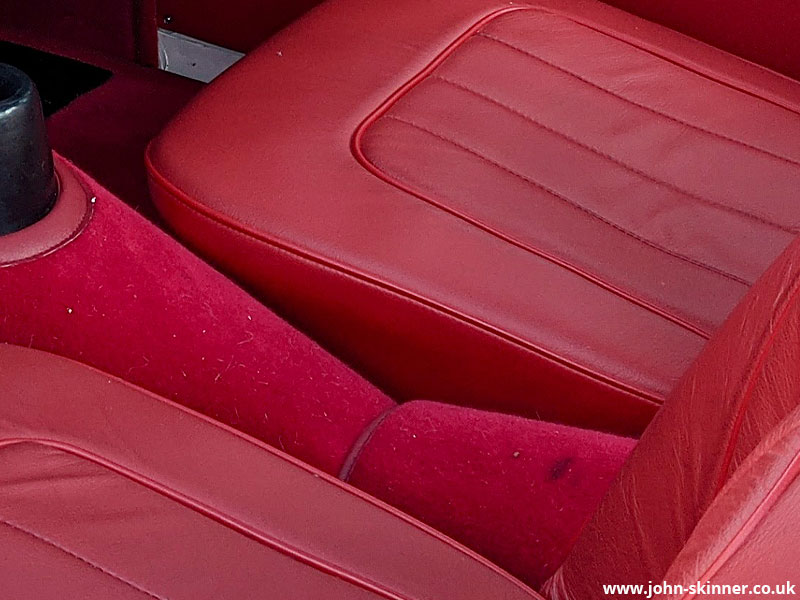
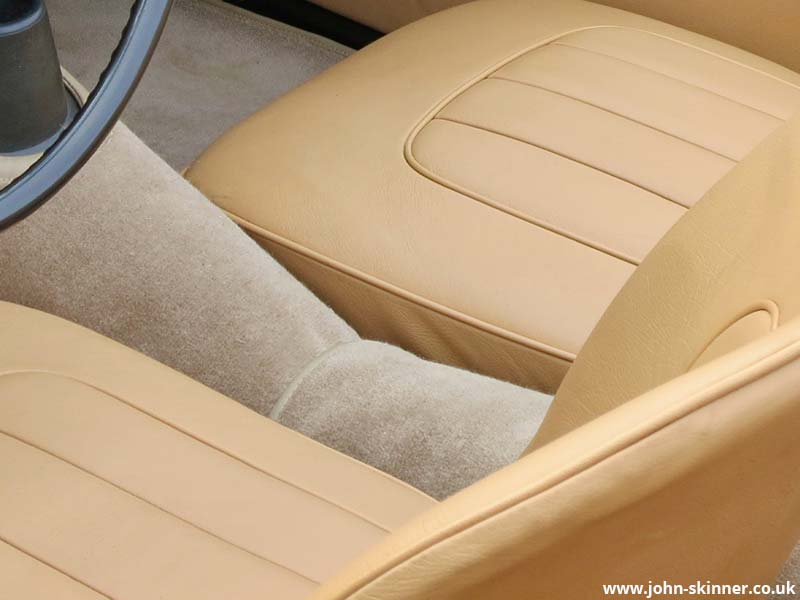
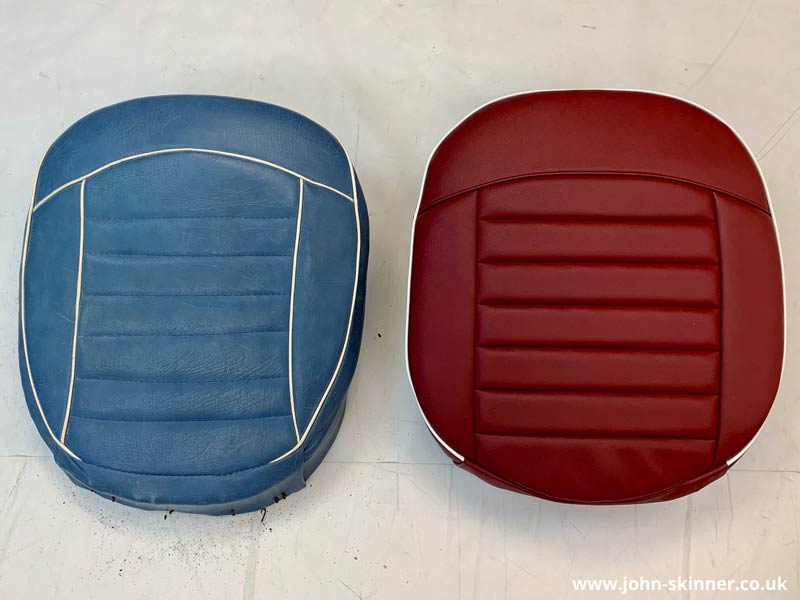
Engineered Piping
We have developed an engineered pre-slit and part-glued leathercloth piping for use across our seat kits. The construction of this piping gives a quality finish to our cushions and backrests as the piping core has room to ‘move’ within the leathercloth surround, allowing it to shape to the curvature of the seats whilst giving a firm structure to the seat outline.
Leathercloth is an ideal material for piping as its lack of stretch ensures it maintains its shape. Its surface finish is also very difficult to catch and snag, making it resilient to wear and tear. It sews beautifully round corners and curves without wrinkling or sagging and gives structure to our seats without adding bulk.
(Although we would always recommend leathercloth piping, we can make vinyl piping to order if there is no suitable colour match for your seat material in our leathercloth piping range).
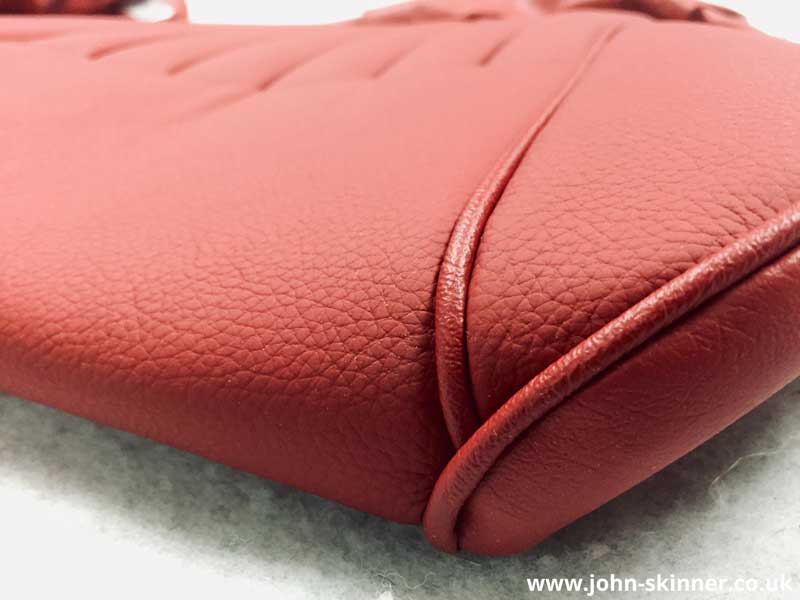
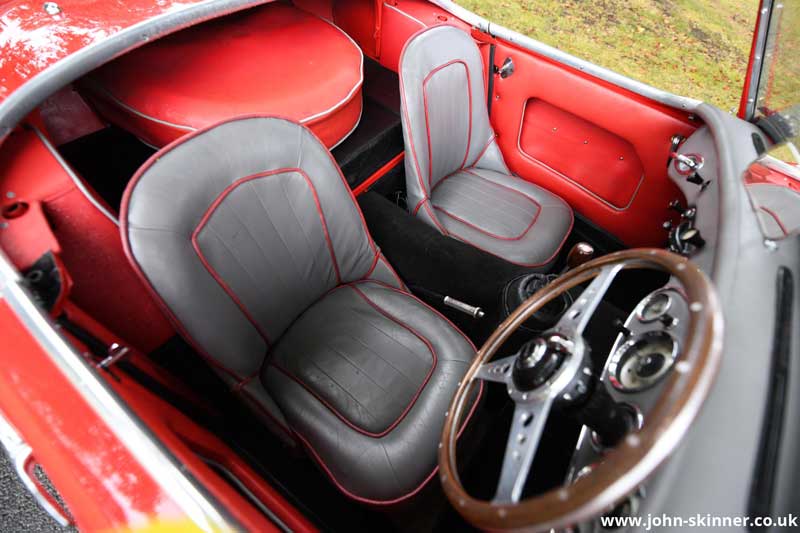
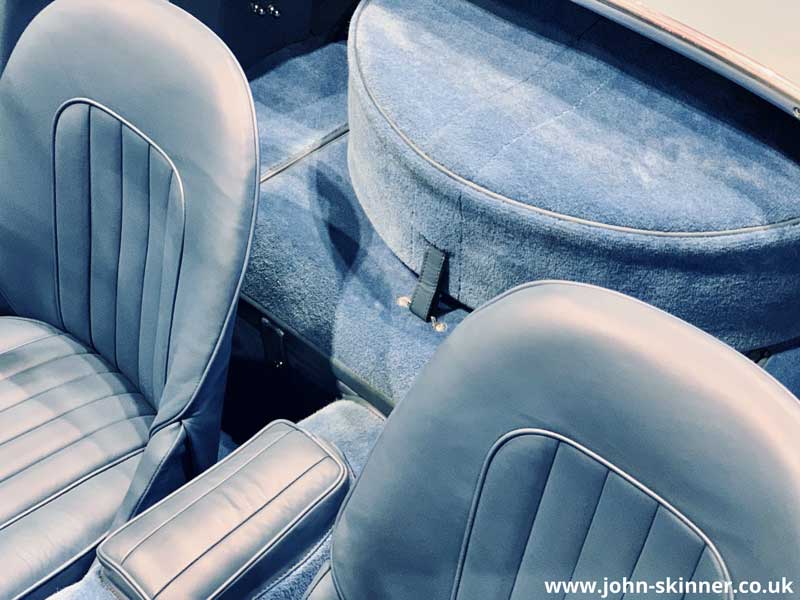
Austin Healey BJ8 Chrome Piping
For customers looking to restore their Austin Healey 3000 Mark 3 BJ8 Front & Rear Seats, we are able to supply the original chrome piping that would have been added to the vinyl seats leaving the original factory production lines. Often referred to incorrectly as ‘gold’ piping (the result of the original chrome piping yellowing through age and sunlight exposure), we are – at the time of writing and to the best of our knowledge – the only supplier to offer this chrome piping as per original specification on our Austin Healey BJ8 seat kits.

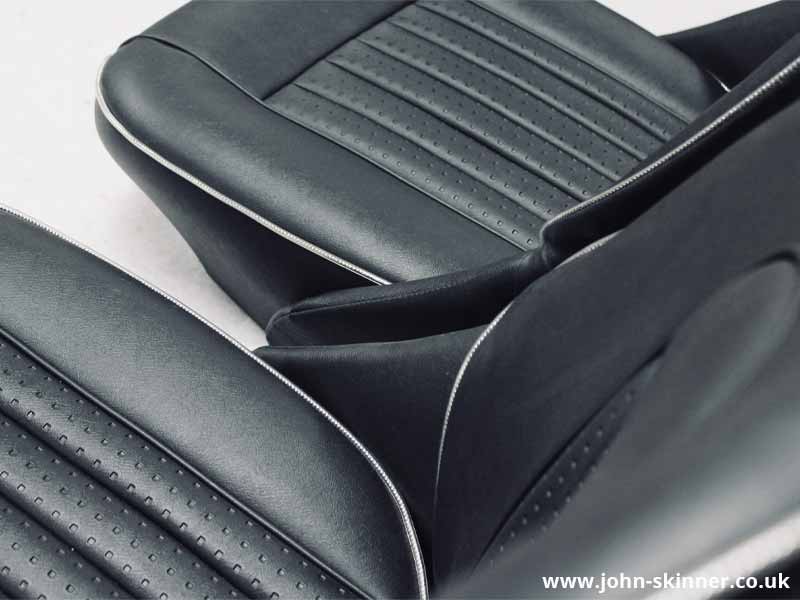
A few more details that make us really proud of our Seat Kits…
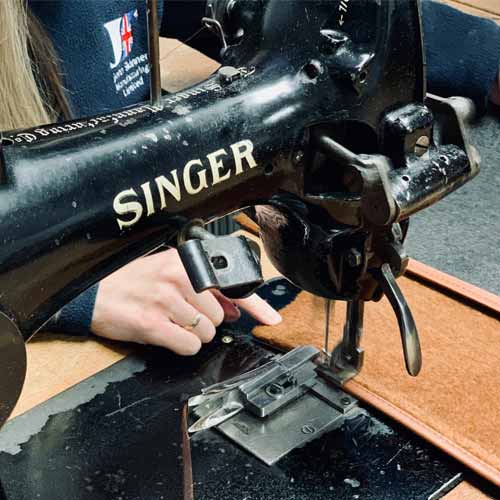
Traditional Machinery
We manufacture all our seat kits on our Seiko and Singer sewing machines. Sturdy and robust, similar machines to these would have been used for original factory line production.

Notch-to-Notch Assembly
Our on-site CNC machines cut our patterns with millimetre accuracy. Notches along the perimeters of our patterns indicate to our machinists how much tension to allow between each notch point when piecing our seat kits together.
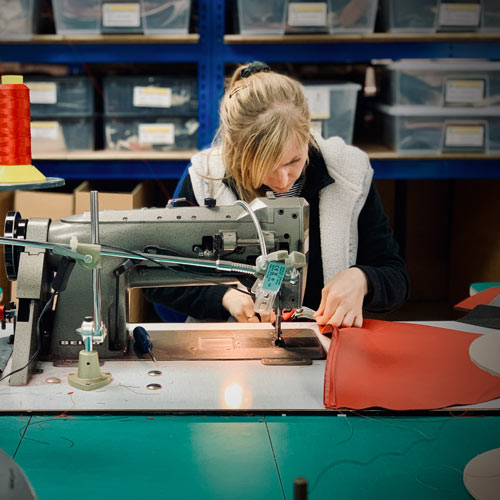
Our Skilled Team
Our skilled team of machinists have extensive sewing experience and assemble our seat kits with precision and care. A small team, our machinists have been with us for many years and have built a comprehensive knowledge of all of our sewn parts.
- Categories: Trimming and Fitting






